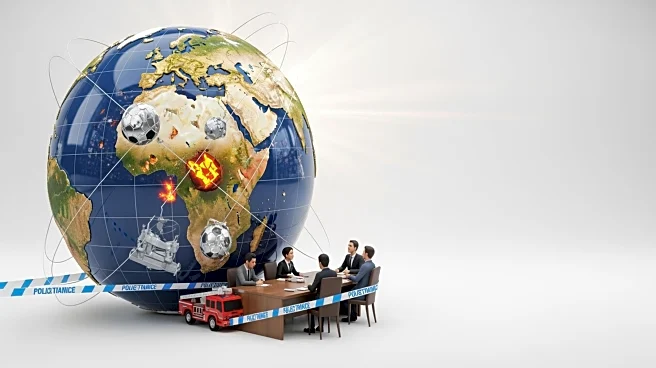What's Happening?
Resource disputes between governments and investors have reached a 10-year high, driven by resource nationalism and competition for critical minerals between the U.S. and China. According to law firm DLA
Piper, 32 disputes have been lodged in 2025 with the World Bank arbitration body, surpassing last year's total. These disputes involve resources such as oil, gas, gold, uranium, and lithium. Latin America, particularly Colombia, has seen the highest number of disputes, with significant cases also in Africa and Europe. The U.S. is exploring mineral partnerships in the Democratic Republic of Congo, highlighting the geopolitical stakes involved.
Why It's Important?
The surge in resource disputes underscores the growing importance of critical minerals in powering technologies like AI and electric vehicles. As countries seek to secure these resources, tensions between states and investors are likely to increase, potentially impacting global supply chains and economic stability. The U.S. and China's competition for these minerals could influence international relations and trade policies. For investors, the heightened risk of disputes may affect investment decisions and strategies in resource-rich regions.
What's Next?
As resource nationalism continues to rise, countries may implement stricter controls over mineral deposits, potentially leading to more disputes. The U.S. and other nations might intensify efforts to secure mineral supplies through international partnerships and agreements. Legal and diplomatic resolutions will be crucial in managing these disputes and ensuring stable access to critical resources. The outcome of these disputes could set precedents for future resource-related conflicts.
Beyond the Headlines
The increase in resource disputes highlights the ethical and environmental challenges associated with mineral extraction. As demand for critical minerals grows, there may be increased scrutiny on the environmental impact of mining activities and the rights of local communities. This could lead to calls for more sustainable and equitable resource management practices.












